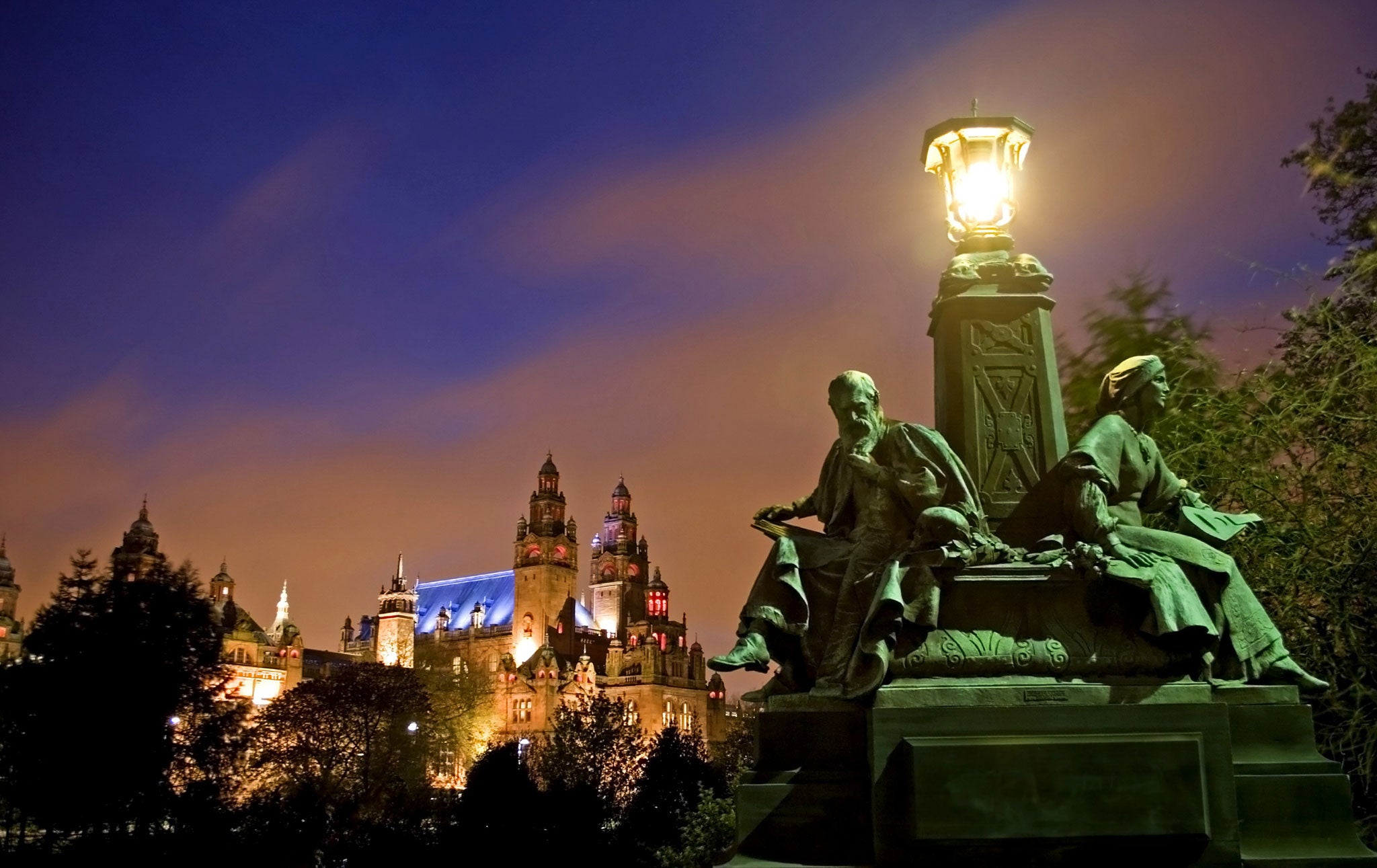On Glasgow and Edinburgh, By Robert Crawford
A study of the love and hate between 'enlightenment' Edinburgh and 'industrial' Glasgow

Sparta glowers at Athens. Athens turns away in prim disdain. Nothing holds back modern Scotland more than the artificially sustained rivalry between Edinburgh and Glasgow, two cities with enough internal contradictions to be going on with.
Ask anyone: Glasgow is friendly, industrial and wild, a city that grasps you warmly by the throat, generous but with a blade tucked into its sock. Edinburgh is douce, cultured and reserved, where they say firmly "You'll have had your tea?", rather than offer you any. The reality, as natives and long-term sojourners know, is very different.
There's nothing unique in regional rivalry. Stockholm mocks Gothenburg and vice versa. LA and San Francisco are the Glasgow and Edinburgh of California. Moscow and St Petersburg have the excuse of both having been capital cities. Robert Crawford dedicates his book "for both / with love", a poet's epigraph and one that colours everything that follows, which is affectionate, sharply observed and sharply written.
A key observation, hinted rather than dogmatically argued, is that both Edinburgh and Glasgow are literary cities, in the sense that their cultural construction depends as much on writing and publishing as it does on architecture or art; there are surprisingly few good paintings of Edinburgh as civic space. In addition, neither city surrenders easily to generalisation.
"Enlightenment" Edinburgh is a thoroughly Romantic, even atavistic, place; Stevenson and James Hogg knew this, but so did David Hume, which is why he became David Hume. In the same way, "industrial" Glasgow remains the "dear green place", Gles Chu, its urban tropes forever reversing into bucolic or pastoral ones. On Glasgow and Edinburgh – the order reverses after an introduction – is a highbrow guidebook, as useful to carry on a visit as it is pleasurable to read far away.
It observes a strict democracy of emphasis – the great chimney formerly at St Rollox in Glasgow gets as much notice as the Scott Monument, the central tower of Glasgow University as much as the Outlook Tower that dominates the "medieval" skyline of the Old Town – and doesn't disdain to treat new architecture on the same level as the old. Crawford's description of the Scottish Parliament building is the best I have read.
It's impossible to catch him out. Pedants will leap on his reference to Queen's Park FC playing at Cathkin, which every fool knows was home to the now-defunct Third Lanark. But he's right. Queen's Park was based in Cathkin Park prior to 1903.
He does miss a few details. Having established the modern "tradition" of placing a penny under Newton's finger on the great Paolozzi sculpture outside the Dean Gallery, he fails to mention two other Edinburgh rituals: in recent years, university students have liked to rub the bronze toe of Sandy Stoddart's draped Hume on the "Mile" the night before exams. And while he mentions the car-park grave of John Knox just over the road, he doesn't explain why Edinburghers spit, often with phlegmy relish, on the cobbled Heart of Midlothian. It marks the old tollbooth prison.
I spent ten years living in a village exactly mid-way between the two cities, in sight of Edinburgh's Castle Rock but populated largely by displaced Glaswegians. You know you're on a cultural cusp when they offer you vinegar or sauce with your chips.
The cities' differences come down to more than condiments but the answer is to do as Crawford does and love them both. During the next visit to the Edinburgh Festival, make time for a trip West and spend a day in the consistently surprising streets of the Dear Green Place. Or have I tipped my hand?
Subscribe to Independent Premium to bookmark this article
Want to bookmark your favourite articles and stories to read or reference later? Start your Independent Premium subscription today.

Join our commenting forum
Join thought-provoking conversations, follow other Independent readers and see their replies